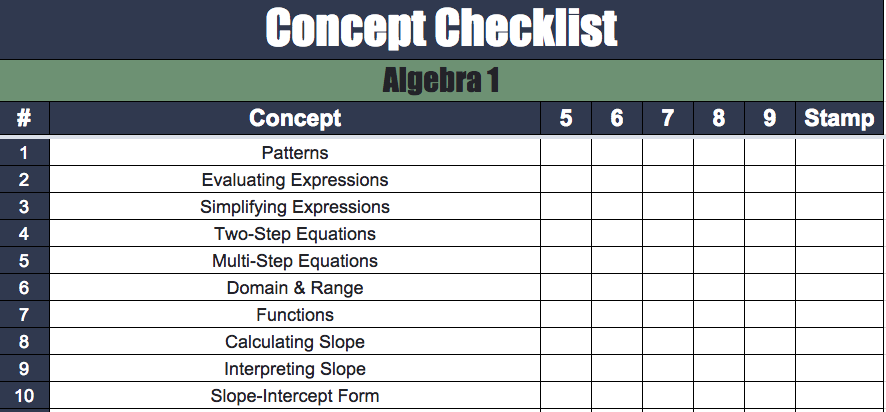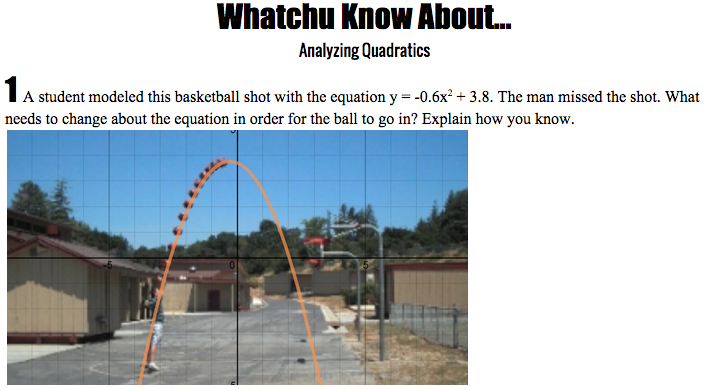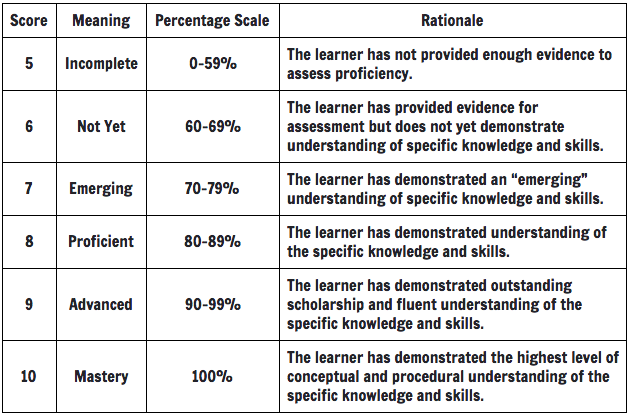By Dane Ehlert, posted September 14, 2015 –
Growth mindset is a hot topic in education, but how
do we promote it in our classrooms? What does it look like in everyday teaching
practices?
I’ve struggled through how to add a growth mindset into my
classroom since my exposure to the
research three years ago. What I’ve learned through my experience is that words
are empty unless they are deeply embedded in practice.
There are many ways that we can embed work on mindset, but I’m
going to focus on the following three areas in my four blog posts.
1. Assessment and evaluation
2. Responding to student progress
3. Curriculum and content
In this post, I’ll focus on what I believe may be the greatest
area of influence on student mindset: assessment and evaluation. In my opinion,
the way we assess and evaluate our students might be the loudest action in our
classroom.
I’ve found that standards-based grading (SBG) is an effective system for promoting growth mindset. It allows
students to make mistakes without penalty, and it enables them to easily
determine how and where improvement can take place.
WHAT IS SBG?
Standards-based grading is a system that breaks the course into
specific standards or desired learning goals for students to master. Here is a portion of
the breakdown I use in my algebra 1 class.

This doesn’t include every concept we teach but instead focuses on
the big ideas we want our students to understand by the end of the school year.
I like this because it allows students and teachers to quickly determine where
improvement needs to take place. This fits well with the improvement and
perseverance components in growth mindset.
Once a concept is taught and learning has occurred,
the teacher gives short, 3–6 question quizzes to assess student understanding
of each concept. The quizzes usually happen every 7–10 days. However, when
grading the quizzes, the number of correct responses doesn’t necessarily
determine the grade. Instead, the teacher seeks to gain a holistic view of each
student’s understanding. Here is an example
quiz I give my classes (click here for all
my quizzes).

When I grade the quiz, I’m especially looking at the students’
thought processes and explanations to get a feel for their level of
understanding. Because of this, I don’t give multiple-choice questions but do ask
students to explain their reasoning for each response. I’m not too worried
about how many questions are right or wrong because I can tell a lot just based
on the work that is shown. In fact, there are many times when a student gets
the answer wrong, but through the demonstrated work, I’m able to give the
student a very high mark.
WHAT DO THE GRADES LOOK LIKE?

Each student receives a grade from 5 to 10 that is determined by demonstrated
learning. As the chart shows, the grade simply depends on the student’s level
of understanding. This is helpful for growth mindset because grades are not
based on point accumulation but instead on the learning that has been demonstrated.
These grades show me how much my students have learned.
RETAKES: THE MOST
IMPORTANT ASPECT OF SBG
The most important part of SBG for promoting growth mindset is the
fact that I allow all students to retake any assessment as many times as he or
she wants, once a day, until the end of the grading period. (Note: The retakes
are not the same as the original.) Then, at the end, I only place the highest
grade for each concept in the grade book. The lower scores are thrown out. The
reason why this is so crucial is because it finally backs up my words, telling
students to persevere and see mistakes as learning opportunities. If I don’t
allow reassessment, then mistakes really aren’t a good thing in my classroom.
How could they be?
Before I used SBG, many of my students would make 30s and 40s on
their tests. Knowing that this was a big percentage of their grade, almost all these
students gave up after making these scores. I couldn’t blame them because they
were using good math! As soon as they made the low grade, they realized that
there was no chance of bringing it up to a satisfactory mark at the end of the
grading period. Why try if there’s no way? This also took away any of my
credibility when I told my students that mistakes are good to learn from
because mistakes were never good on my assessments. They resulted in low
grades.
However, now that I allow retakes, a student can struggle on an
initial assessment and not be out of the game. He or she can make mistakes,
learn from them, work hard to persevere, strive toward greater learning, and
finally be rewarded for their effort when they are reassessed. This is the most
important growth mindset message in my classroom.
As you can see, I’m a big proponent of SBG. However, even if
this system isn’t for you, I would encourage you to have some sort of
reassessment system in place for whatever grading method you use. To me, this
is the best way to show students that mistakes are
useful in math and perseverance is the path to success.

Dane Ehlert, [email protected], is a secondary math teacher in Texas.
He tweets at @DaneEhlert and blogs at whenmathhappens.com.